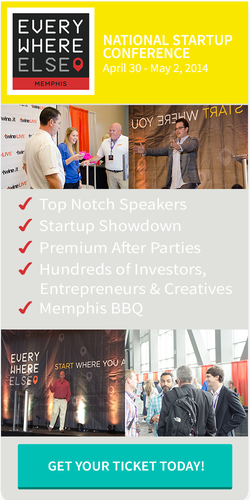 The startup scene today is an overcrowded space where companies are constantly vying for talent. But hiring talented people is only the first step in cultivating an innovative and creative environment. Building a workplace where there is a constant exchange of ideas involves finding the right formula for your company and culture.
The startup scene today is an overcrowded space where companies are constantly vying for talent. But hiring talented people is only the first step in cultivating an innovative and creative environment. Building a workplace where there is a constant exchange of ideas involves finding the right formula for your company and culture.
You can’t force creativity, but the right setting will put your team in the right frame of mind to find imaginative solutions. Here are six ideas to help cultivate creativity in your company:
1. Be easygoing.
A relaxed and flexible work environment increases your team’s productivity by letting ideas flow. Encourage an atmosphere where the boss is more likely to make you a coffee than expect you to make them one.
Let go of the traditional 9-5 work week and have team members come in to work when they are rested and at their best. Not everyone is an early bird, and that’s good! Embrace your employees’ natural rhythm — they’ll show up to work fresh and ready to go.
 2. Hire for culture.
2. Hire for culture.
Look for team members who understand your vision and align with your culture. Having a team that shares one vision and works together helps the organization run smoothly. This doesn’t mean only hiring people who always agree with you, though. Encourage different perspectives — it will help your company stay ahead of the curve.
3. Bring on people who love what they do.
Hire people that are passionate about their work. You want people at your company who really care; people who are excited to go to work everyday because they believe in the product. Adding people that want to improve your product will be the most beneficial for your company.
Point #2 goes hand-in-hand with this one. It’s far more pleasant to work alongside interesting, friendly, and driven people working towards the same goals.
4. Encourage diversity.
Put together a team with different backgrounds, passions, and capabilities. Having a group with a diverse set of ideas and problem-solving approaches helps push your product forward. Embrace and celebrate your team members’ individuality — out-of-the-box ideas and problem-solving approaches help push your product forward.
5. Incorporate sprints
The hustle and bustle of daily office life can wreak havoc on your concentration: emails, phones, meetings — the distractions are endless. That’s where a “sprint,” a set amount of time in which your team works to finish a project, can be the solution.
Startups develop quickly in the early stages because everyday interruptions are at a minimum. When your company has started to grow into individual teams, having them work in a remote location surrounded by nature is a great way to center your focus and take up a project from start to finish.
6. Take ample time off.
Communicate how important taking vacation is. Our brains are constantly on and connected, taking time off for some R&R is crucial for a healthy work/life balance. Wore-down workaholics don’t produce the highest quality content, you want your employees to be fresh and excited to be at work. Convey to your employees how important time off is — and make it non-negotiable.
There are plenty of roadblocks your team will have to overcome to breakthrough in your industry; the company’s work environment shouldn’t be one of them. Reimagine what “work” should look like, and you’ll be surprised at the impact it will have on your team’s energy and creativity. The best takeaway for your employees? They won’t be boxed in by rigid rules and can focus on building the next game-changing feature instead.
What’s your favorite way of breaking the mold?
Christian Springub started his first business at the age of 12 buying and reselling kinder suprise collectible toys at flea markets. Three years later he switched to creating websites for small business in his hometown with Fridtjof. Christian moved to San Francisco in 2011 to build Jimdo in the USA.
The Young Entrepreneur Council (YEC) is an invite-only organization comprised of the world’s most promising young entrepreneurs. In partnership with Citi, the YEC recently launched #StartupLab, a free virtual mentorship program that helps millions of entrepreneurs start and grow businesses via live video chats, an expert content library and email lessons


















